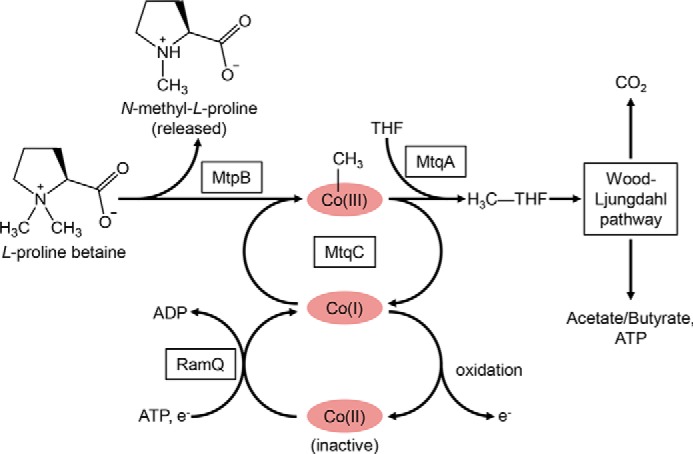Figure 6.

Model for proline betaine metabolism in E. limosum. The methyl group from proline betaine is transferred to Co(I) MtqC by MtpB, forming methyl-Co(III) MtqC. N-Methyl proline is produced for release into the culture supernatant, whereas the methyl group is subsequently transferred to THF by MtqA. The resulting methyl-THF enters the Wood–Ljungdahl pathway, in which a portion is oxidized to CO2 and the remainder is converted to cell carbon or acetate/butyrate. Co(I) MtqC can be adventitiously oxidized to catalytically inactive Co(II), which is reduced to active Co(I) by the ATP and reducing power–dependent activity of RamQ.
